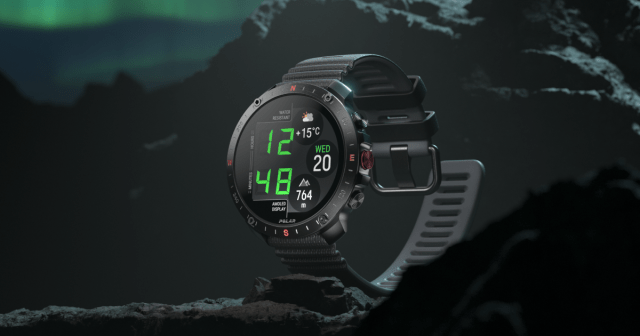How often should I work out? No matter how good of an athlete you are, how often you train, or how much you know, finding the right balance between training and recovery is an ongoing challenge. It’s key, especially for pros, but difficult to do, even for pros.
Keeping the total training load in control and making sure you don’t multiply your training load abruptly is necessary to improve performance.
Keeping the total training load in control and making sure you don’t multiply your training load abruptly is necessary to improve performance and prevent undertraining, overtraining, and injuries.
This is a must for pros and athletes who train like pros, but equally important (or even more so) for exercisers who don’t always train consistently. If you’re used to training only four hours a week and decide to start doing more, it’s easier to ‘accidentally’ double your training load in a short time.
If after a long break from running, you pick up right where you left off, it may be too much of a shock for your body.
Or, if after a long break from running, you pick up right where you left off, doing several runs a week, you may be setting yourself up for injury if you don’t monitor how much of a shock the sudden ‘comeback’ is for your body.
Whatever your level and goals are, the best way to know your personal limits and stay injury-free is to combine how you feel with objective data. Here’s where the Polar Training Load Pro™ feature can help you to reach your peak performance – safely.
The 3-in-1 training load
Training load measures how straining your training is for your body, which helps you to plan your training, analyze sessions and track progress.
The combination of different loads helps you to better monitor your progress.
Based on the International Olympic Committee consensus statement on load in sport and risk of injury, Polar’s Training Load Pro feature separates internal cardio load (the effort needed) and external muscle load (the work done, e.g. distance covered or total power pedaled).
Then it combines these two loads with your personal assessment of how straining your training session was.
This means that instead of measuring just one system of your body, the Training Load Pro gives you a full combo of three:
Cardio Load
This is an internal measure that shows how straining the training is on your cardiovascular system based on heart rate. The higher the Cardio Load, the more strenuous the training session is for the cardiovascular system.
Cardio Load is based on training impulse calculation (TRIMP), a commonly accepted and scientifically proven method to quantify training load. It considers the duration and the intensity of the training session and daily variations – caused by, for example, nutrition or fatigue – that affect how much effort you need to put in when you train.
Cardio Load rate can be different for different people, even for the exact same training session with the same heart. That’s because it depends on the user settings: resting heart rate, maximum heart rate, and gender.
The advantage of combining all three loads is you can better keep track of your progress by comparing your internal and external loads.
For example, you can monitor how your fitness level improves by comparing your Muscle Load and Cardio Load: when you can produce the same Muscle Load (do the same work) with a lower Cardio Load (less effort), it’s a sign of improved fitness.
Muscle Load
This is an external measure based on power and tells you how much your musculoskeletal system worked during training. Muscle Load shows the amount of mechanical energy (kJ) that you produce during a running or cycling session. This shows your energy output (instead of the energy input it took for you to produce that effort). In general, the fitter you are, the more energy output you can produce with less input.
Muscle Load helps you quantify your training load in high-intensity training sessions, such as short intervals, sprints, and hill sessions, when your heart rate doesn’t have enough time to react to the changes in intensity.
Perceived Load
This reflects the subjective feeling of your training. Your Perceived Load is quantified with Rate of Perceived Exertion (RPE), a scientifically accepted method to quantify training load. Your Perceived Load levels indicate how hard a training session was compared to your session average from the past 90 days.
The advantage of combining all three loads is you can better keep track of your progress by comparing your internal and external loads.
For example, you can monitor how your fitness level improves by comparing your Muscle Load and Cardio Load: when you can produce the same Muscle Load (do the same work) with a lower Cardio Load (less effort), it’s a sign of improved fitness.
Personalized training feedback
So, those are the loads measured but what is it that you get as a result?
Not to worry, we won’t leave you wandering in the data jungle alone: Training Load Pro not only measures but also interprets the data for you and gives you personalized feedback.
Understand what works best for you
Training load Pro takes data from your training session and converts it into an absolute training load number and a 5-scale interpretation relative to your previous training sessions. This allows you to compare different training sessions at one glance.
Create your own personal recipe for success.
This is not only helpful for understanding the impact different training sessions have on your body, but also to learn what type of training works best for you.
By analyzing what type of training is beneficial for you and what is rather counterproductive, you can use this information to plan upcoming training sessions. This helps you to create your own personal recipe for success.
The smarter you train, the higher loads you tolerate.
With the 5-scale interpretation you can also track progress as the scaling adapts to your training background: the smarter you train, the higher loads you tolerate.
As your fitness and tolerance for training improve, a training load that was ranked worth 3 bullets (‘medium’) a couple of months ago, could rank for only 2 bullets (‘low’) later on.
Know if you’re doing enough or too much
Moreover, Polar Training Load Pro calculates Strain (average session training load from past 7 days) and Tolerance (average session training load from past 28 days).
Strain shows you how much you have strained yourself with training lately. It shows your average daily Cardio load from the past 7 days.
Tolerance describes how prepared you are to endure cardio training. It shows your average daily load from the past 28 days. To improve your tolerance for cardio training, you need to slowly increase your training over a longer period of time.
Follow the progress and maintain control
The Cardio load status shows how your current Strain relates to your Tolerance and based on that shows you whether you are in a detraining, maintaining, progressive, or overreaching training load status.
This makes it easy for you to follow how your weekly training loads have varied in the past month and to know whether training has been progressive (which is necessary to improve your fitness).
The Cardio Load Status helps you to keep the total training volume in control in long-term and on a weekly and daily basis, it helps you to optimize the timing of intensive or exhaustive training sessions so that they are performed when the body is supposed to be recovered and ready to receive a new training stimulus.
It will also help you to avoid unplanned undertraining. Based on the relationship between Strain and Recovery, you also get a warning when you are at risk for getting injured or ill due to too fast and too high an increase in training load.

Dig deeper into balancing training and recovery
In addition to Training Load Pro, Polar’s Smart Coaching features include the Recovery Pro™ feature that gives you an even more in-depth understanding of how well you’ve managed to optimize your training and recovery.
Based on your Training Load and Recovery Status, you’ll get personalized feedback and a daily training recommendation.
Watch the video to learn more about how Training Load Pro and Recovery Pro work together.
If you liked this post, don’t forget to share so that others can find it, too.
Or give it a thumbs up!
I like this article
Please note that the information provided in the Polar Blog articles cannot replace individual advice from health professionals. Please consult your physician before starting a new fitness program.





